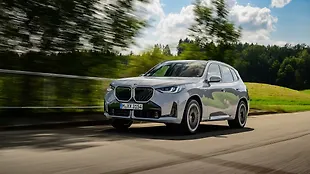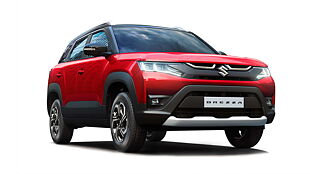Intro

Our long-termer Baleno RS has been in the hands of many of my colleagues this month. Not one of them wanted to return the car, for reasons which I will dwell upon later. But thankfully, I finally got to use the car within the city, and got a better feel of this latest offering from Maruti. And as promised, here we are, with the car's city driving report.

Driver Comfort

The interior of the RS doesn't really sport anything different from the standard Baleno 1.2. But I've always liked this all-black theme and the smartly designed dashboard with silver inserts. So, this one works for me. With the dashboard set low and great frontal visibility, it means I can even sit low. Finding a comfortable driving position too has not been difficult. All thanks to the various adjustment options of the seat (recline, reach and height), steering (rake and reach) and seatbelt (height). The seat's adequately soft padding with side bolsters have provided sufficient comfort in snarled-up traffic too. Besides, the arm rest adds to the support and also doubles up as a safe receptacle for my wallet.

City Driving

The world is moving towards smaller capacity engines with bigger outputs. The 100bhp 1.0-litre BoosterJet engine in the Baleno RS is also one such car. Coupled to a smooth five-speed gearbox, this three-cylinder motor isn't as silky smooth as the regular Baleno's 1.2-litre petrol powerplant. But it's still reasonably refined by three-cylinder standards. It's silent till 2,000rpm, post which, the throaty sound of the motor runs parallel to the healthy acceleration. The engine gets a fixed-geometry turbo-charger. So what about the turbo lag, you may ask? Here, Maruti Suzuki deserves a pat on the back for drawing in minimal lag. Sure, sometimes I miss the drama that comes with a turbo kick, but I'm more than happy living with a linear power delivery. A light clutch further adds to the delightful driving experience.

Also, this motor's 150Nm of torque is a good jump over the 115Nm offered by the standard Baleno. I could easily push the Baleno in higher gears and at slower speeds, thanks to easily available torque right from about 2,500rpm. And this strong thrust continues until about 5,000rpm ensuring a good mid-range. I've been happily weaving through traffic with the car’s compact size and light steering. As a performance-oriented car, the Baleno RS has a brilliant pick-up. So, it’s now become second nature to zoom past other cars.

Fuel Efficiency
'With good performance one has to bargain with fuel efficiency'. This maxim no longer holds true. The lightweight nature of the car and great drivability has helped me achieve 13.8kmpl on an average in bumper-to-bumper Mumbai traffic. This is indeed commendable for a turbo-charged petrol car.

Parking niggles

The Baleno RS has a small rear windscreen like the standard Baleno and so, it doesn't provide a good rear view. This I thought would be a problem for me while parking. But here, the rear view camera and sensors came to my rescue. The camera provides a nice wide view of the rear and the guidelines helped me maneuver correctly into a tight parking spot. This not only shows up on the touch screen system, but also displays on the instrument cluster while the beeping intensifies as one inches closer to an obstacle.

Vehicle stats - City

This should easily sum up why all of my colleagues didn't want to hand back this car's keys to me. Any minor negatives in the car are easily overcome by the long list of positives. Small wonder then that this car is now a prime favourite amongst our team. Next month, I plan to go jaunting somewhere out of Mumbai with the car. I shall be back then with a detailed report about its highway run.

Vehicle stats
Variant - Baleno RS Alpha trim
Odometer reading - 10,354
Positives of the report - driver-friendly cabin, drivability, fuel economy
Negatives of the report - interior lacks solidity, fabric floor mats soak water, engine not as refined as the Baleno 1.2's four-cylinder
Fuel efficiency - 13.8kmpl
Pictures by Kapil Angane

![Maruti Suzuki Baleno [2015-2019] Image Maruti Suzuki Baleno [2015-2019] Image](https://imgd.aeplcdn.com/272x153/cw/ec/21723/Maruti-Suzuki-Baleno-Right-Front-Three-Quarter-147250.jpg?wm=0&q=80)























